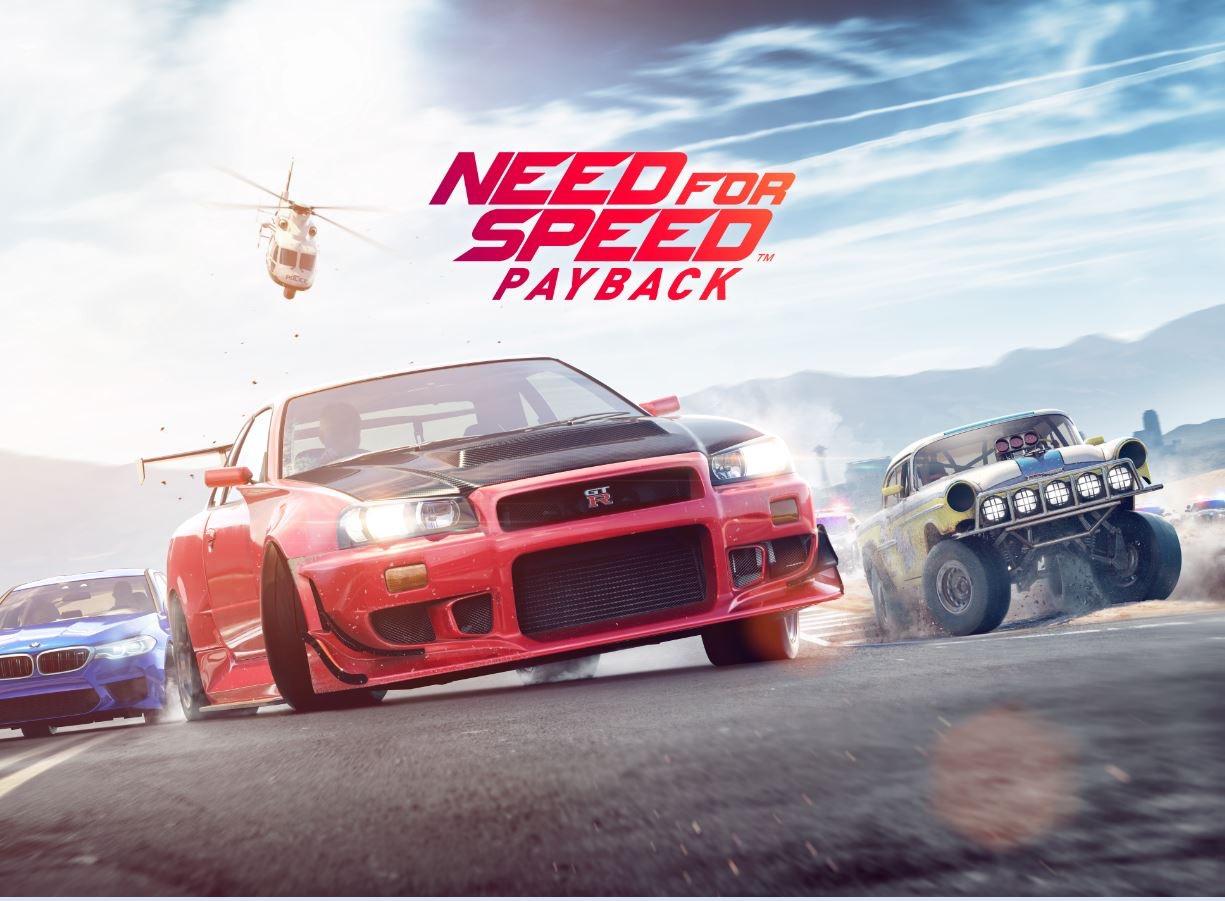
Decades have passed since Need for Speed began its digital road trip, and though many things have changed during that time period, the series has yet to show signs of engine failure. With every pair of passing years, a new entry revs its engine in time for a fall release, giving racing fans something to set their stopwatches to on a practically bi-annual basis. At least, that’s the case with the main series, meaning that we’re not even counting or talking about the free-to-play entries for mobile and whatnot.
Whereas 2015’s entry was a reboot featuring cheesy live action cutscenes, 2017’s is an altered beast called Need for Speed: Payback. A game in which characters do battle against an almost faceless entity on the roadways and desert paths of a fictional Las Vegas, Nevada. On paper this sounds like your average series entry, where an over-the-top and often forgettable storyline gives reason for balls to the wall racing. However, while that may be true in some respects, what we’ve been given this holiday season is not the same beast we’ve become accustomed to thanks to one simple reason: greed.
With this being the year of the loot boxes, it’s only fitting that yet another popular (and, in this case, storied) franchise has chosen to focus on concurrent purchases instead of worrying about its players’ time, bank accounts or enjoyment. It’s more egregious here than ever before, too, given that this terrible, greed-fueled progression system punishes those who are unwilling to spend extra money by making them grind, grind and grind again.
If you’re familiar with Ghost Games’ previous Need for Speed, that being their self-titled 2015 entry, then you’ll have a decent idea of what to expect here. That’s because, just like before, Payback is based around different driving styles. The garage doesn’t play as big of a role this time around, however, because things are less about tuning and more about purchasing cars of different types. That, and leveling them up through a brand new system that has coined and adopted the term ‘speed cards.’
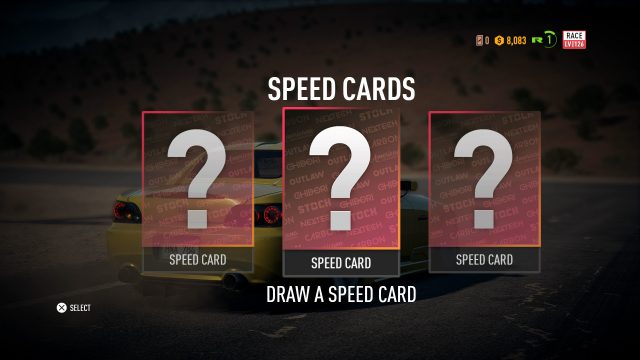
So, what are speed cards? Well, they’re your part upgrades, for lack of a better term. A shitty, pay-to-win replacement for something that has worked for decades. The only reason they exist is because they allow the developers (and EA, of course) to throttle player progression to the point where they’ll be so under-leveled that they’ll consider buying loot boxes. After all, doing so will not only net said person more money, but also more parts that can then be turned into speed cards through the game’s literal slot machine, which allows you to recycle and then gamble three different cards. One recycled card equals one part to gamble with, though parts can also be obtained through the loot boxes as mentioned above. Meanwhile, one speed card is randomly awarded upon the completion of every story event.
Speed cards come in multiple varieties, which factor in their (made up) manufacturers, numerical levels and perks, of which there can be up to three. The idea with them, then, is that you can assign one to each of your car’s several different parts, meaning its block, ECU, turbo, brakes and more. Each card is only suited for one part, as well, meaning that players can’t move their favourite card to another part after acquiring something better. All you can do is send them to your garage for later use, sell them for in-game currency or recycle them.
Those who equip their cars with three (or six) cards from the same manufacturer will receive a performance bonus, although this isn’t nearly as important as it sounds. It’s the cards’ perks that are of the most value to the player, because they offer boosts in several different categories. For instance, one card could offer improvements to your speed, acceleration and turbo. Meanwhile, another will improve your jump height and distance, and a third will better your brakes. This creates some micromanagement and adds a bit of strategy to the experience, though the system remains flawed despite this. Also, considering that Need for Speed has always been a series fit for casual gamers, introducing this type of micromanaging means running the risk of alienating those folks.
This all fits within Need for Speed: Payback‘s level system, which assigns each new car a numerical level value that can then be improved upon through equipping speed cards. Levels are important, because each race, drift, off-road, drag and runner (timed checkpoint races and police escape challenges) event comes equipped with a suggested level. Thus, the player is forced to constantly watch and worry about his cars’ individual ranking in comparison to those that are suggested.
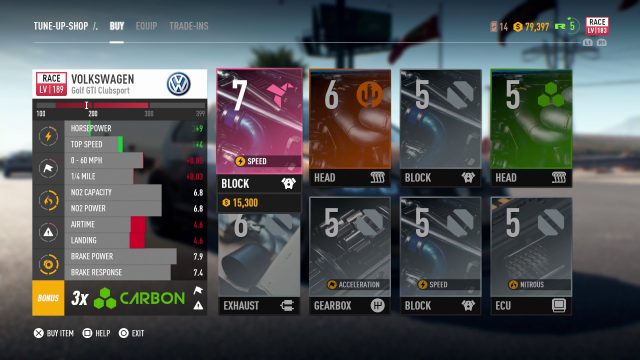
On paper, the last sentence may not sound much different from your typical RPG or Car RPG, where leveling up is important and one must be ready for each individual engagement. After all, as the player progresses, so too does his or her competition.
Sure, there’s that. However, Need for Speed: Payback is designed in a way that the player is often forced to be of a lower level than his opponents. There’s simply not enough money, or enough parts to recycle, to allow for one to always be ahead of the competition. This is especially true when you consider that Payback requires players to own several different vehicles (of various types) and level them independently. Also, that when a new car is purchased it must then be leveled independently using speed cards. Hell, each car also has a max level, be it 299 or 399, and the end game races want you to be at 380 or above.
The game’s map — which consists of a small, Las Vegas style city and lots of desert landscape called Fortune Valley — is also very cluttered, to the point where it’s hard to pick out individual markers. For instance, each car type (race, off-road, drag, runner) has its own dealership where new and unlocked vehicles can be purchased. There’s one per type, and you need to go to them in order to buy new cars (which are often too expensive to afford given that speed cards cost upwards of $21,000 each). I lost sight of the race one, like others online seem to have also done, and could not find it on the map despite limiting the icons and zooming in. I eventually looked it up, and found out that the icon was hiding underneath a gas station icon and that only a hint of it could be seen. At this point, my starter car was already maxed out and I had to buy a new car in order to progress, factoring in not only the initial cost but also that of the speed cards it’d need to get to a competitive level. I lost out on the expensive speed cards I’d already purchased, then had to break the bank to get similar ones because I couldn’t find a way to transfer them.
When I got to the game’s final act, it became clear that I was in for a grind. My cars were heavily under-leveled, to the tune of 60+ in some cases, and the speed cards I was being offered at the tune shop weren’t going to provide much of an improvement. It truly seemed as if the game had slowed its progression system down to make me want to spend money on speed coins that would then be used to buy loot boxes that would provide me with very helpful currency and other such boosts. I’ve never done so, though, and plan to never bother with such things, so it wasn’t in the cards.
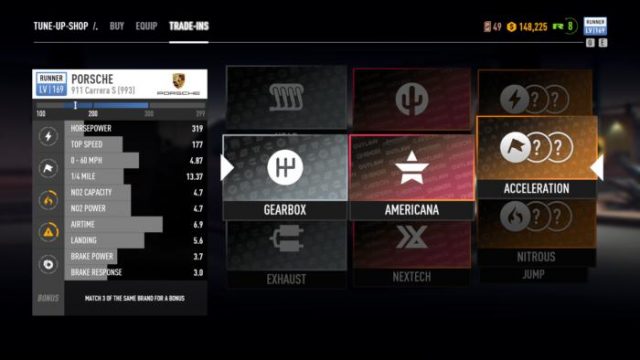
I did earn some loot boxes through progression, but those were the only ones I ever opened. Most were of the base variety, which offered $5000-$20000, along with a cosmetic piece (coloured smoke, turbo or underlighting) and three to five parts. The larger ones were mostly there as a tease, though I did get a few.
In the end, I said ”Screw it!” and dropped the difficulty from normal to easy, which allowed me to be a lot more competitive with an under-leveled car and kind of bypassed the whole ‘break the bank to win’ mentality. Sure, some races were difficult, and required me to be on my toes (or to crash the boss I was racing out of contention and leave him or her in the dust), but most were pretty doable this way. That is, even though my car was, for instance, level 332 instead of the suggested level of 380.
It’s too bad that it’s so pay-to-win (even after an update that was supposed to address that), because Need for Speed: Payback is a half-decent game otherwise. Its handling could be better, but it’s fast, furious and enjoyable when greed doesn’t play a part. This is the type of game where you’re always on the edge, riding the fine line between being in control and suffering a terrible wreck. You need to be fast, have good reflexes and always be watching for traffic, though, because some of these races get pretty nuts. Then again, this is Need for Speed, and that’s par for the course.
The story I briefly mentioned above centres upon three individuals who care more about high speed racing than they do anything else. These rather annoying avatars (Tyler the Racer, Mac the Showman aka. drift specialist and Jess the Runner) have made a powerful enemy after a heist gone wrong puts them in the bad books of an organization called the House. An almost faceless group, whose name befits the game’s Las Vegas-inspired setting.
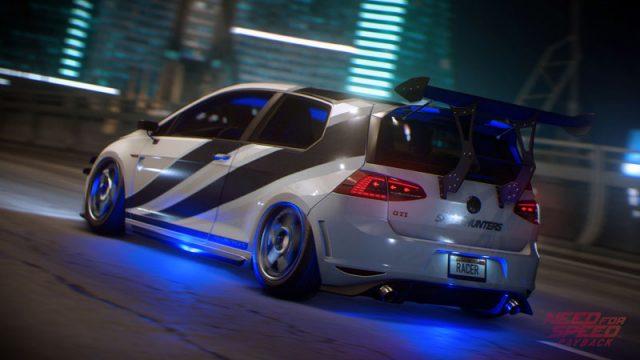
After being betrayed and having their planned heist blow up in their faces, Tyler, Mac and Jess must start from the ground up as they plan their revenge. That is then complicated by others who feel they’re owed things by the group — specifically Tyler whose back most of the pressure resides upon. He’s constantly harassed and told what to do by a man named the Gambler, who also lost out when the shit hit the fan, and wants his comeuppance. He puts the Racer to work, and doesn’t let him stray very far.
The problem with this narrative is that, while it wants to be a Fast & Furious clone, it doesn’t do enough to stand out, nor is it willing to exist outside of the box. Those movies aren’t very good, but they at least have a lot more character, passion and intrigue behind them than this game does. At least, the last one did, as it’s one of the few I’ve actually watched.
Tyler, Mac and Jess are also incredibly forgettable characters, as are those who surround them. Truth be told, although they’re under the knife, it’s hard to ever feel the intensity that you’re supposed to during their story beats. It often comes during the balls to the wall races, but that’s also usually attributed to the game’s catch-up AI and inflated difficulty that wants to entice players into spending money unnecessarily.
Need for Speed: Payback is also hurt by its inability to stand out or be unique, and by its lack of cops in freeroam. This is a game that apes others, and doesn’t stand on its own two feet thanks to any sort of individual creativity. In many ways, this is Need for Speed: Horizon, which is a nice way of saying that it’s an EA ripoff of the much, much better Forza Horizon games, all of which I consider to be the best racers out there.
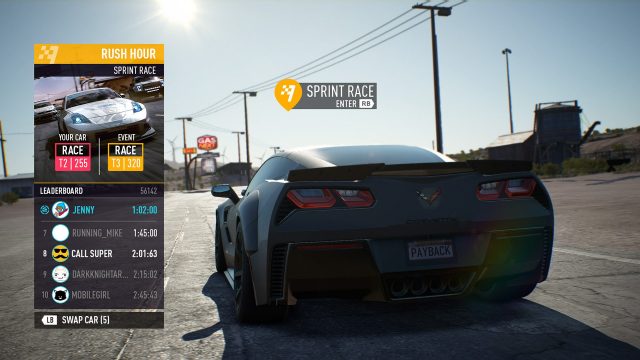
For starters, Payback features an open world system wherein drivers earn points for driving at high speeds, drifting, hitting miscellaneous objects and engaging in dangerous, near misses, much like is the case with the Horizon games. These points are then added up, and are used to increase one’s personal driver level, which then leads to unlocking loot boxes at certain plateaus. This isn’t all, though, as the game world is also littered with challenges that work on a three star rating system. These include speed traps, speed zones, drift zones and more. And, as is to be expected, those stars can help you earn more loot boxes.
There are also derelict cars to find and fix, by discovering old and rusted chassis then finding the several parts that they need in order to, once again, become working vehicles. On top of that, the radio DJ also discusses the player’s journey like in Horizon, and one can challenge other AI drivers to random races after meeting in the open world.
This story is based around rising through the ranks, though, and is structured around visiting different cliques who specialize in one type of racing, be it traditional street races, off-road, drag or drift. Beating their challenges leads to taking on their leaders, and it’s that way in which one moves through the storyline. It’s these named racers who you can challenge at will, which is complemented by a tree that rewards you for challenging more and more racers of increasing difficulty. Essentially, you’re beating the cliques a second time, but doing so on a one-by-one basis.
Of course, there’s also online play, with speed lists containing different types of races. This multiplayer works similarly to the campaign, however, meaning that it’s never truly fair. You choose a car or two, and must pay attention to their levels before engaging against real life competition. Needless to say, that paves the way for annoyances and frustration.
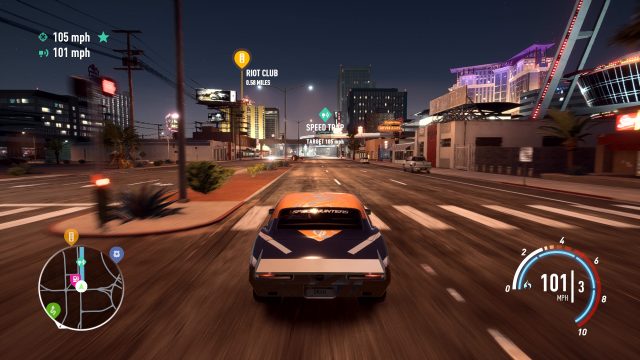
Presentation-wise, little is held back. Need for Speed: Payback looks like the big budget, triple-A title that it is, and looks the best during the always sunny daytime. At night, things can look a bit muddy, but it’s still far from being a bad looking game in any way or form. That said, this isn’t the best-looking racer we’ve ever played, nor is it the best sounding. The voice acting gets annoying, the characters say stupid things, and there’s little in the way of depth. The soundtrack is solid, though, even if it is a bit weird. While there’s a good mix of rock and rap, with artists like Queens of the Stone Age, Royal Blood, X Ambassadors, Jaden Smith, Gorillaz, Tom Morello and A$AP Ferg, it feels as if some events are designed to only be played while listening to one of the two types. As a rock fan, I tried to always cycle to the rock songs, but it was tough during some races because the same rap songs would appear and rock would be hard to find. Then, at other times, the opposite was true.
At the end of the day, Need for Speed: Payback is a very tough game to recommend, and it’s almost all the result of greed. If this game didn’t punish people for not wanting to spend extra money (as it shouldn’t), then it would be a lot more enjoyable and much easier to suggest to those with interest. As it stands, though, the opposite is true. Despite being patched, Payback still feels like a pay to win game with a greedy, mobile mentality at its heart. Its decent, but unspectacular and often borrowed gameplay devices simply don’t do enough to stand out amidst this bullshit, thus making this a very frustrating and ultimately forgettable experience. It’s a shame, too, because as a big fan of the series I was very excited to get my hands on it.
I’m glad that I bought it where I did, because they allowed me to return the disc for a credit refund after having it for a week. Once I finished the campaign, I had no interest in ever playing this thing again, and wanted to put it out of sight and out of mind.
**This review is based on the Xbox One version of the game, which we purchased.**

